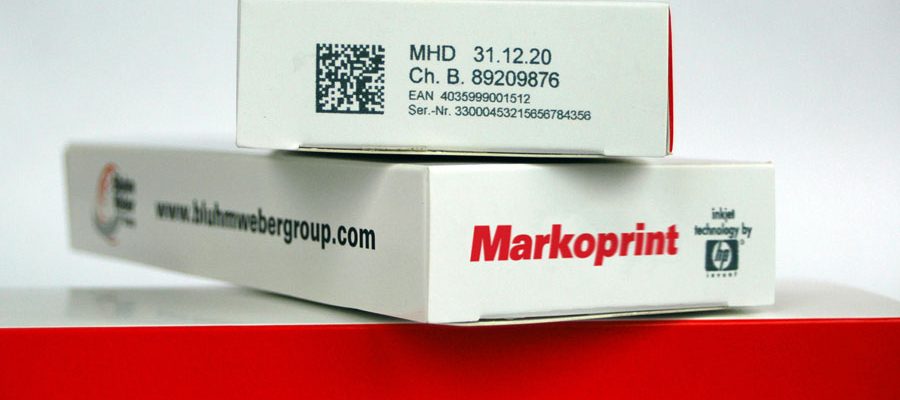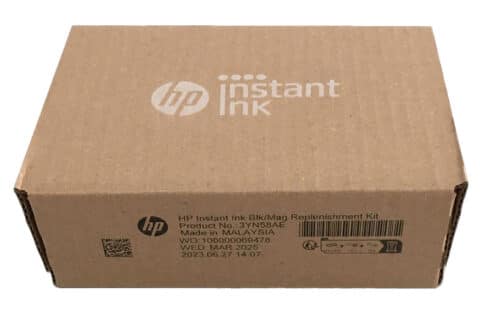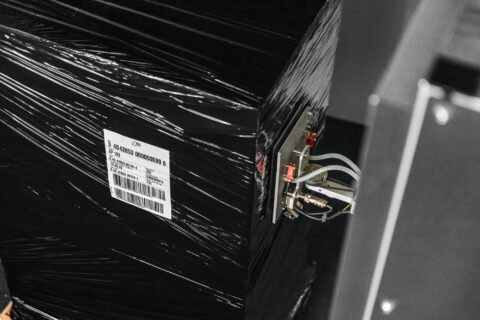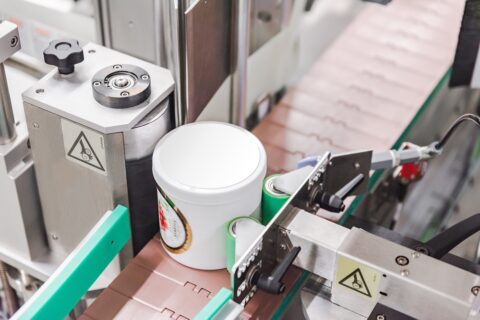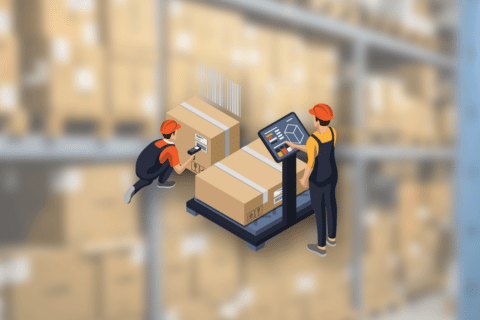The Russian crypto-code law poses major challenges for pharmaceutical manufacturers: Since January 2020, all marking systems must be capable of applying special identification codes to drug packaging. Weber Marking Systems has been following the latest developments in Russia in detail and has prepared itself for the necessary adjustments in advance.
Twelve different product groups in Russia have to be marked with crypto-codes for traceability. In addition to pharmaceutical products, the system also covers shoes, clothing, tobacco and alcohol, among others. In the long term, the system is intended to cover all products. The means of identification will be an identification code in machine-readable form – represented as a data matrix code, a barcode or an RFID label. The idea is to standardize the serialization and identification of pharmaceutical products at the national level. All settings must comply with the GS1 standard and be configured at customer access level.
What is a crypto-code?
A crypto-code consists of two components: an identification element and a verification element.
The identification element contains a GTIN (AI01) and a specific serial number (AI21). Both must be applied in pure text form.
The verification element, on the other hand, contains a public key and a crypto key. This element is used for control and verification. It consists of a sequence of characters formed as a result of a cryptographic transformation of an identification code.
In addition, all information must be encoded in a Data Matrix Code ECC 200 with minimum print quality of Class C according to the ISO 15415 standard.
Compared to common GS1 Data Matrix codes used for serialization in the U.S. and EU, crypto codes are up to 45 percent larger due to their public and crypto keys. The challenge lies in the size of the verification element. Through cryptographic transformation, the data set to be encoded grows to more than twice the size of the GS1 data matrix used in the EU.
In general, crypto codes can be encoded in full or reduced format. The full format contains the following information:

The reduced format, on the other hand, contains the following information:

Upgrade of the idesign software makes crypto-code marking possible
As a full-range supplier of coding and marking technology, Weber Marking Systems is well prepared for new regulatory requirements. In order to meet those imposed by the Russian legislation and to be well prepared for the future, our inkjet printers have been adjusted. Regardless of whether you use one of our new or old inkjet printers, the adjustments can be made with little effort.
The requirements of particularly small and sophisticated packaging formats are also taken into account. This is because the higher data density of up to 44×44 modules considerably increases the size of the Data Matrix Code. Weber Marking Systems also offers the possibility of printing the Data Matrix Code in the usual size of 12.5 ×12.5 mm or smaller.
Cameras with a higher resolution are available for code quality inspection in accordance with the ISO 15415 standard. With the solutions from Weber Marking Systems, printing with 600 dpi in print quality class A is possible.
Markoprint inkjet printer for ideal print quality
 The thermal inkjet printers Markoprint integra One and Markoprint integra Quadro together with the print head Markoprint integra Ultimate have already proven themselves very well with our customers.
The thermal inkjet printers Markoprint integra One and Markoprint integra Quadro together with the print head Markoprint integra Ultimate have already proven themselves very well with our customers.
The particularly compact Markoprint integra One thermal inkjet printer with HP cartridge technology can be easily installed in or on production lines thanks to its small dimensions of 188 x 80 x 98 mm. The system achieves top speeds of more than 180 m/min and has IP65 protection. The Markoprint integra One prints logos, variable texts, barcodes and data matrix codes in brilliant quality. The printing operator can make changes to the variable fields or settings directly on site via a user-friendly panel.
The SmartCard cartridge monitoring system automatically recognizes the ink type and sets all values accordingly. Changing ink manually is not necessary.
High-speed controller for up to 4 print heads

The Markoprint integra Quadro print controller controls up to four inkjet printers at up to four printing positions simultaneously or alternately. For example, it makes it possible to print primary and secondary packaging on both sides of one or two independent production belts. Two different printing technologies (HP, Trident, Funai, Xaar or Seiko) can even be used. Thanks to its compact design, the Markoprint Integra Quadro can easily cope with tight spaces. The available mounting options make the installation within or directly on the industrial line very easy. The device has been specially designed to be integrated into control cabinets and machines.
Printing barcodes, text, numbers, symbols and 2D codes using inkjet printers has never been faster: depending on the print content and the printing technology used, a rapid printing speed of up to 240 m/min at 300 dpi is possible! The proven, intuitive control panel allows printing and label settings to be changed conveniently on site. The powerful Markoprint iDesign software is available for designing and managing print layouts. The Markoprint Integra Quadro is equipped with all common interfaces such as Ethernet and USB. The data transfer to the print heads is 1:1 and can be printed in real time without batch processing. The patented Markoprint Integra Ultimate print head from Weber Marking Systems with HP cartridge technology is ideally suited for serialization using crypto code.
A special feature: The print head does not have to be covered or removed when cleaning the system. It closes when it is not in use and the nozzle plate is automatically cleaned every time it is closed and opened. It is therefore not necessary to remove the cartridges during long breaks, such as over the weekend. For the pharmaceutical industry or for integrated systems, this means that the cartridges do not need to be removed in closed or difficult-to-access systems and during long breaks. The Integra Ultimate always prints flawlessly in the usual high quality – even after long breaks.
Learn more about our industrial inkjet printers

